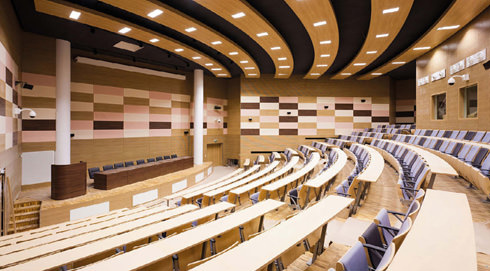
In both the physical and virtual sense, the lecture hall should be a place for humanity’s collective knowledge to flow freely. It should be a place for students to be noticed and ideas to be constructed, deconstructed, and explained without fear of judgment or scorn.
For this to work properly, however, higher education must be accessible to the many students living with disabilities.
If you are an educator and would like to make your own learning environments more applicable and accessible to all of your students, no matter their personal situation, here are some important points to consider.
Integrate Real-Time Transcription Services
Whether your students are taking part in online lectures, in-person lectures, or you have had to adopt a hybrid of the two, transcription services can increase accessibility for everyone involved.
Solutions like Verbit Transcription services tailor their approach to situations just like this one, having proved themselves as experts in the education sector. Implementing this can be a step forward in ensuring that deaf students are not left out of the learning journey and that no information needs to pass students by as a result of limited audio accessibility.
Create a Culture of Inclusion
The route to greater levels of understanding and inclusion often stems from awareness and education.
Unraveling concepts such as ableism in academia means giving the unheard a voice, and it starts in the classrooms, in the lecture halls, and in the actions of the educators.
Creating a culture of inclusion in the educational environment (the meaning of which is still undecided among many) may be the ideal way to return confidence to those who have suffered from exclusion in academia as a result of disability.
An accepting, understanding, self-aware learning environment could be a prime setting for developing a more accessible form of higher education in general.
Don’t Rush Your Material
Hurtling through slides of infinitely dense academic theory is likely not the best approach to take in the pursuit of a more accessible lecture hall.
Ensuring that your presentation is coherent and easily visible, complete with captions if needs be, could increase accessibility levels and raise engagement throughout lectures and seminars.
Make Yourself Available
Educators who make themselves open to questions, encourage the Socratic method, and support their student’s curiosity are often the ones who end up building an enjoyable learning environment for everyone.
It is not easy for everyone to speak freely on a whim, and some students with disabilities may need more time to process information.
Making yourself available is crucial in this regard. Everyone should get the opportunity to ask questions and engage in academic discourse. A good way to do this is to establish an online forum on the institution’s student portal, or you could even start your own Discord server for people to exchange ideas at later dates, long after the lecture or seminar has run its course.
You may want to give out your email, too, as this is a way to ensure that people who are struggling with accessibility options can make their worries known to you.
Even when having to jump through a mountain of red tape to help others, there are still methods to be put in place, so don’t ever hesitate to offer out your hand as an educator.
